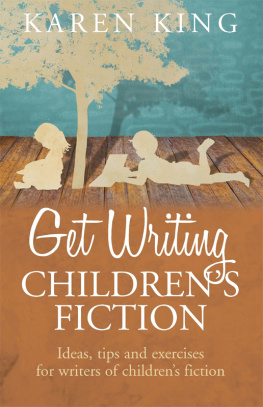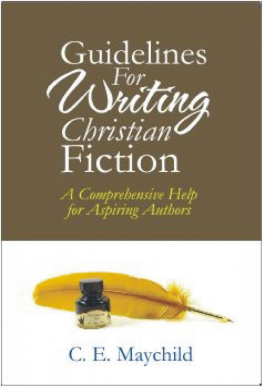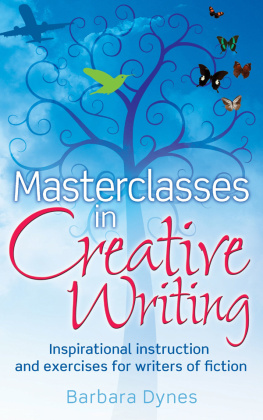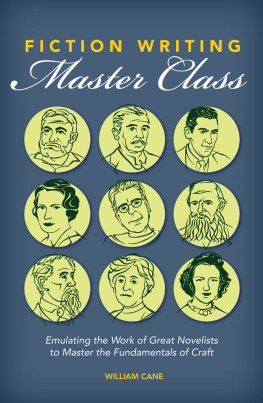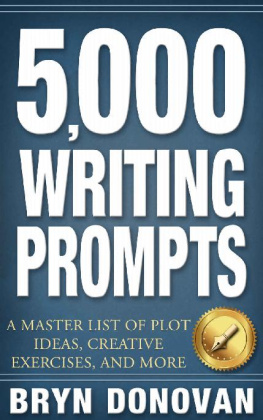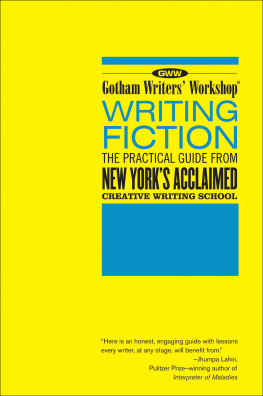Novel Ideas
Novel Ideas
Contemporary Authors Share the Creative Process
SECOND EDITION
INTRODUCTION, INTERVIEWS, AND EXERCISES BY
Barbara Shoup and Margaret-Love Denman

Published in 2009 by
The University of Georgia Press
Athens, Georgia 30602
www.ugapress.org
2001 by Barbara Shoup and Margaret-Love Denman
2009 by The University of Georgia Press
All rights reserved
Designed by Walton Harris
Set in 11/15 Adobe Garamond Pro
Printed and bound by Maple-Vail
The paper in this book meets the guidelines for
permanence and durability of the Committee on
Production Guidelines for Book Longevity of the
Council on Library Resources.
Printed in the United States of America
13 12 11 10 09 p 5 4 3 2 1
Library of Congress Cataloging-in-Publication Data
Novel ideas : contemporary authors share the creative
process / introduction, interviews, and exercises by
Barbara Shoup and Margaret-Love Denman. 2nd ed.
p. cm.
Includes bibliographical references and index.
ISBN-13: 978-0-8203-3279-6 (pbk. : alk. paper)
ISBN-10: 0-8203-3279-8 (pbk. : alk. paper)
1. Fiction Authorship. 2. Fiction Technique.
3. Novelists, American 20th century Interviews.
I. Shoup, Barbara. II. Denman, Margaret-Love.
PN3365.N63 2009
808.3 dc22 2008047844
British Library Cataloging-in-Publication Data available
ISBN for digital edition: 978-0-8203-4628-1
Contents
Preface to the Second Edition
REREADING THE AUTHOR INTERVIEWS as we revised and updated this new edition of Novel Ideas, we kept getting sidetracked, jotting down bits of practical advice and inspiration that seemed to apply to our own novels-in-progress. The interviews are, without doubt, the most useful part of this book both for the insights they bring to the writing process and for the way they make you feel that you want to get to work on your novel right now, and that you have some new information that makes this possible.
One accomplished novelist who found Novel Ideas helpful in a bad stretch wrote, Every problem I was facing, and many I didnt know I faced, had been struggled through by one of the interviewed novelists. I have read passages to my husband, saying, This is it; I dont believe it. Another wrote, You realize, reading these interviews, that the process of writing a novel is unique and individual, that even celebrated writers throw away many pages and tear their hair out, and that those who succeed are the ones who stay at the desk and keep doing the work. Aspiring novelists told us again and again that reading the interviews gave them the courage to begin and lots of help along the way.
This new edition includes what readers agreed were the best interviews from the first edition, as well as new interviews with Peter Cameron, Michael Cunningham, and S. J. Rozan. Weve also added exercises to accompany the interviews, based directly upon writers observations about the writing process and specific strategies they described for working through a novel. Weve also redesigned the book to highlight the general exercises suggested throughout the first section, Writing a Novel, making them readily accessible to the reader browsing for a way to solve some problem that his or her novel presents.
The spectrum of information in Novel Ideas was best described in our interview with Sheri Reynolds, who said, In my classes, I teach about how writers make choices, and I try to get my students to examine why a story starts in one place rather than another, what the writer gains from this point of view rather than that one why a writer may have chosen to mention Froot Loops rather than Cracklin Oat Bran. And I know all these things are important. I know it. But when Im writing, I am not considering these things I was never, ever, ever even considering Cracklin Oat Bran. Never. I dont know how to reconcile the part of writing that is technical and craft oriented with the part of writing that feels mystical. The technical part is what I teach, but the mystical part is what I love.
Our hope is that this new edition of Novel Ideas will help you find the balance of craft and magic you need to bring your novel into being.
Barbara Shoup
Margaret-Love Denman
Writing a Novel
Introduction
The short story is a piece of work. The novel is a way of life.
TONI CADE BAMBARA
THE GENESIS OF A NOVEL is a strange and wonderful thing. It can begin as early as ones childhood, in images or overheard conversations never quite understood. Toni Morrisons novel Sula began this way. All her life, she had carried with her the memory of a woman whose eyes were never completely open, whose brown skin had a lovely, dusky matte. There was something purple about her, Morrison said. Maybe she wore purple or maybe it was a quality of the air surrounding her. And her name, Hannah Peace, was spoken as one word, Hannapeace, by the women of the town. Morrison remembered that it was spoken with a kind of awe. As if Hannah Peace was a woman they had forgiven.
It was the mysterious sense that this woman had been forgiven that Toni Morrison found intriguing and that led her to begin asking herself a series of questions. Why did they forgive her? What is there to be forgiven among women? What are the laws of womens friendships? What could never be forgiven? In time, the memories and questions coalesced, and she realized what the novel would be about. Before she wrote the first words, Toni Morrison knew she wanted to explore the nature of friendship among women, particularly among black women. Understanding this, she made up Sula Peace and Nel, and made them friends. She made up a world for them, the Bottom, and peopled it with characters like Jude and Plum and Shadrack, Ajax and the Dewies. She created Sulas grandmother Eva, and the long-remembered childhood image found its place in Sulas mother, Hannah Peace. Then she set it all in motion. She let the characters play out their weaknesses, their fears. She let them find their strengths, the truths of their lives, and in so doing created the novel Sula, so real it seems to breathe.
The genesis of a novel might be the authors interest in political issues, as in the work of Joan Didion, J. M. Coetzee, and Brian Moore. It might be in the exploration of intense personal experience, such as Tim OBriens novels about the Vietnam War, or a technical challenge of interest to the author Jane Smiley set out to mimic an ecosystem in the structure of Moo.
A novels genesis might be in a place, real or imagined: Tony Hillermans Joe Leaphorn and Jim Chee novels were inspired by his desire to write about the southwestern landscape. As a child, C. S. Lewis drew cartoons of an imaginary world that eventually became Narnia. It might be in another work of art a concerto, a painting, a novel. Valerie Martins Mary Reilly began with a scene in The Strange Case of Dr. Jekyll and Mr. Hyde in which the scullery maid was weeping. I thought, what is she crying about? Martin said. She must know something.
A novels genesis might be in a persistent voice you hear inside your head, or a single image. William Faulkner had a picture in his mind of a little girls muddy drawers, which became the germinal scene for The Sound and the Fury.
Sheri Reynoldss The Rapture of Canaan began with a dream. I dreamed about this baby with praying hands, Reynolds said, except his hands werent really praying. They were seamed together at the heart line. I woke up just enamored with these hands. For days, the image stayed with me, and I thought, Who is this baby? And then I thought, Who would this baby be important to? And then I thought, Who is this childs mother? And then I had the kernel of my book.
Next page

